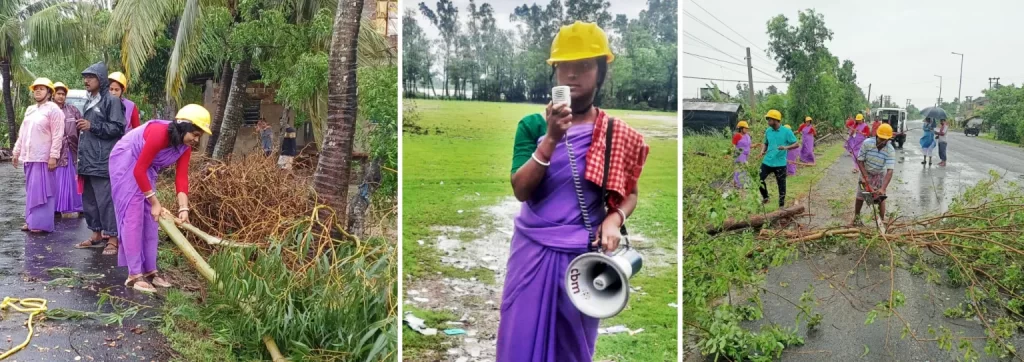In the wake of Cyclone Remal’s devastating impact, our hearts go out to the communities affected by this disaster. Wind speeds of up to 135 kmph and heavy rainfall left a trail of destruction across Bangladesh, West Bengal, Mizoram, Assam, Manipur, and Meghalaya—affecting some of the communities we have been working with for several years.
Our immediate concern lies with the well-being of our communities. We’re in close contact with our teams on the ground, assessing the damage and getting ready to provide the necessary support.
The increasing frequency of extreme weather events like Cyclone Remal serves as a stark reminder of the importance of disaster risk preparedness, especially for persons and communities already in a vulnerable position due to geography, gender, poverty, and disability, among others. Beyond short-term relief measures, empowering communities to anticipate and respond to emergencies can significantly lessen the impact of future events.
At CBM India, we’ve been working in the field of disability-inclusive disaster risk reduction and humanitarian response for the past 25 years. Our work builds community resilience and ensures the inclusion and meaningful participation of persons with disabilities and their representative organizations.
This commitment extends to the areas recently devastated by Cyclone Remal. One of our recent projects, run in partnership with Sundarban Social Development Centre, focused on building disaster resilience in the Pathar Pratima block, within the South 24 Parganas district—an area directly affected by Remal.

Here’s how we empowered the community to face emergencies, with an emphasis on gender equity and disability inclusion.
- Forming Village Disaster Management Committees – With the help of the community, we formed and strengthened inclusive Village Disaster Management Committees to implement strategies and plans to reduce disaster-induced losses and damages.
- All Committees were further divided into Task Force Groups. We trained these groups on first-aid, rescue operations, early warning, relief camps and shelter management, and WASH. All groups also received emergency operations equipment which included, among others, life jackets, lifebuoys, rescue ladders, wheelchairs, generators, megaphones, and helmets.
- Social Mapping – We conducted community mapping exercises with the Village Disaster Management Committees to understand risk zones, resources, and the social context of participating villages. This information was used to create a plan for future preparedness.
The program equipped the Pathar Pratima block community with the knowledge and resources they need to face future disasters. From improved early warning systems to essential skills like first aid and search and rescue, the community is now significantly more prepared.

Thanks to their enhanced preparedness and the coordinated efforts of the government and local authorities, our community’s Task Force Groups were able to swiftly evacuate residents and livestock to safe areas, resulting in zero reported loss of life. It brings us immense joy to see that our work helped keep the community safe.
We remain committed to supporting our communities. In the coming weeks, we will keep you updated on our work in the affected areas.
Disclaimer: All of CBM India’s disaster risk reduction and humanitarian assistance programs are in support of government—central and states—initiatives.



